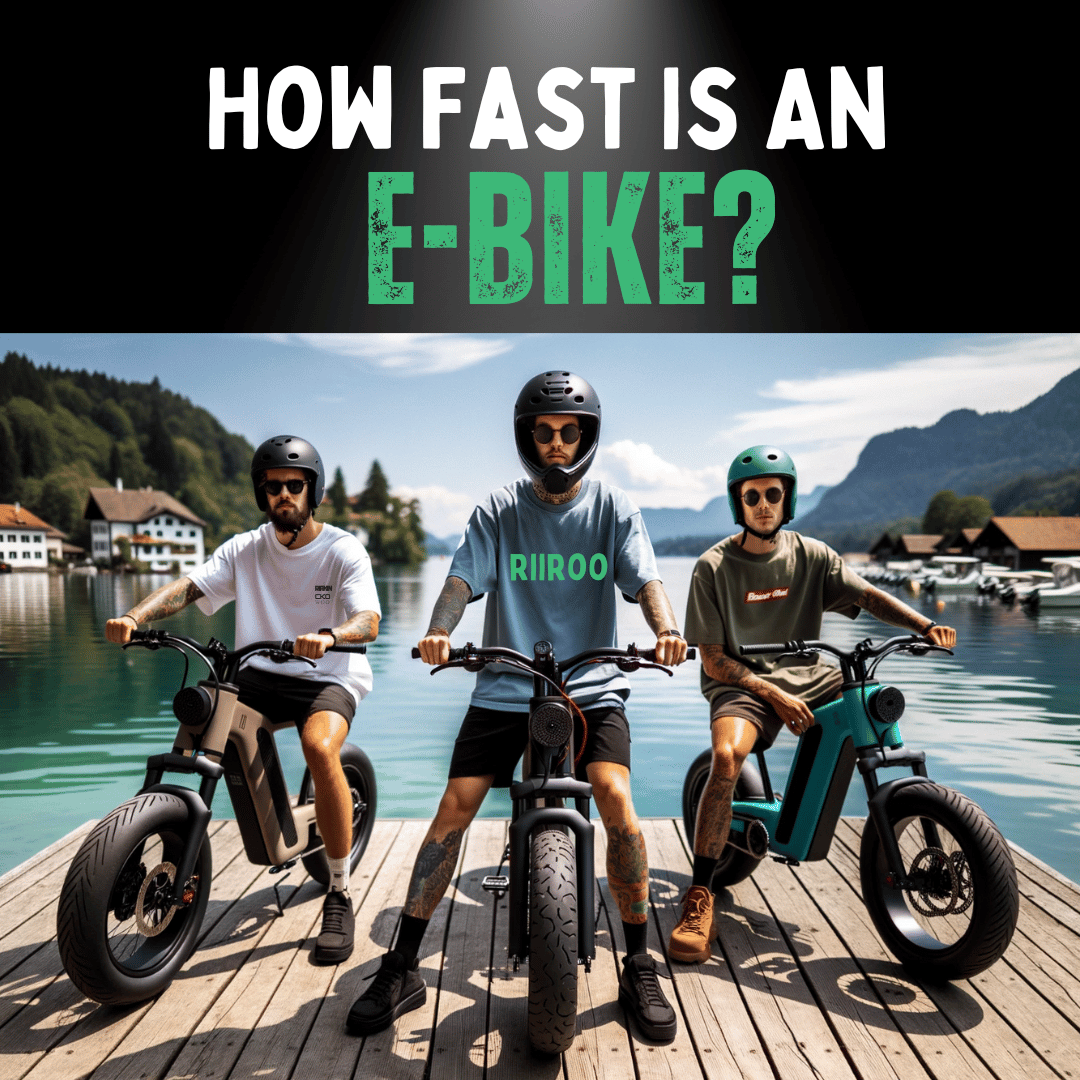
Updated:16.4.25
How Fast Is an E-bike? The Law’s the Limit
E-bikes—those sleek, electrically powered bicycles—are quickly becoming the go-to option for eco-friendly commuters and thrill-seeking riders alike. Whether you're weaving through city traffic or exploring scenic trails, they promise a smarter, cleaner, and faster mode of transport.
But just how fast can they go? And what do the rules say about those speeds? Let’s break it down.
Quick Snapshot: Top Speeds for E-bikes
Understanding E-bike Classes
E-bikes are grouped into classes that define how they operate and how fast they can go. Let’s decode them:
Class 1
Pedal-assist only, with no throttle. The motor kicks in when you pedal and cuts off at 20 mph (32 km/h).
Class 2
Equipped with a throttle. You can ride without pedalling, but the speed is still capped at 20 mph.
Class 3
Pedal-assist with a higher ceiling—up to 28 mph. These require helmets and are restricted from some bike paths.
UK-Specific E-bike Regulations
| Topic | Description |
|---|---|
| E-bike Class in the UK | E-bikes must have pedals and provide assistance only when pedalling. The motor must not exceed 250W and must stop assisting above 15.5 mph. Anything faster is considered a moped or motorbike. |
| Note on Other Vehicles | Electric motorbikes, scooters, and mopeds require licenses, registration, and insurance. Riders must be over 17 with at least a provisional license or CBT. |
Keeping Your E-bike Running Smoothly

A well-maintained e-bike performs better and lasts longer. Here's how to keep it in top condition:
- Battery Health: Charge fully, avoid deep discharges, and store in a cool, dry place.
- Tyre Pressure: Inflate to the recommended PSI. It improves speed and efficiency.
- Brake Check: Inspect regularly. Dragging brakes can hinder speed and reduce safety.
- Chain Care: Clean and lubricate often. A happy chain = smooth performance.
How Speed Rules Vary Worldwide
Global e-bike regulations differ significantly, so it's crucial to know the laws wherever you ride:
United Kingdom:
250W max power, 15.5 mph top assist speed. Anything above is considered a different vehicle class.
United States:
- Class 1 & 2: 20 mph limit
- Class 3: 28 mph limit, pedal-assist only
European Union:
Assistance capped at 25 km/h (15.5 mph) and 250W. Faster bikes are classed as mopeds.
Australia:
Limit of 250W and 25 km/h. Beyond that? Motorcycle territory.
Canada:
Speed limits range from 20–32 km/h depending on the province. Max 500W output in most areas.
Real-World Speeds: What’s Possible?
E-bikes only assist up to their limit—but that doesn't mean you can't go faster. On a downhill or with strong legs, riders can coast beyond 28 mph. Just know: the motor stops helping above its class limit.
Some off-road models? They can push 85 mph—but you won’t find them cruising down the high street anytime soon.
Smart Buying Tips
Don’t let speed be your only guide. Here’s what else to consider:
- Know the laws: Is your local area OK with a 28 mph e-bike?
- Understand your route: Hilly terrain? Opt for torque-rich motors. Long commutes? Look for extended battery life.
- Your goals: Want exercise? Class 1. Want ease? Class 2 or 3 may suit you better.
Why Speed Limits Matter
Respecting e-bike laws isn’t just about avoiding fines. It’s about safe, responsible riding that keeps everyone on the road protected.
Big Picture: E-bikes and the EV Revolution
E-bikes are more than trendy—they’re transformational. They offer an eco-friendly alternative to cars, reduce urban congestion, and cost significantly less to operate.
Benefits at a Glance
- Save money: No petrol, no road tax, and minimal maintenance.
- Green impact: Lower emissions and reduced carbon footprint.
- Less traffic: More e-bikes = fewer cars on the road.
In Summary
E-bikes offer freedom and speed—but within limits. Whether you’re cruising at 15.5 mph or pushing 28 mph, they’re designed to support, not replace, your pedalling power.
Ride smart. Ride safe. And enjoy the electric journey.
FAQs
Do e-bikes have different speed classes?
Yes. Class 1 and 2 assist up to 20 mph; Class 3 can assist to 28 mph but requires pedalling.
Can some e-bikes go faster than legal limits?
Yes, but they fall into different legal categories and may require registration and licensing.
Does high speed affect battery life?
Absolutely. The faster you ride (especially under motor assistance), the quicker the battery drains.
Can I modify my e-bike to go faster?
Technically yes—but modifications could make it illegal to ride on public roads without licensing and insurance.
Get in Touch 🚀
Loved our article on “How Fast Is An E-bike?”
Got the itch to dive into more wheely-awesome info?
Whether you're a parent or a grandparent, we're here for all your kids ride-on toy questions! 🚗💨
Jump into our collection at RiiRoo.com or start a Live Chat and let’s talk toys!





Share:
How Much Does A Dirt Bike Cost in 2025?
How to Ride a Motorcycle: A Beginner's Guide